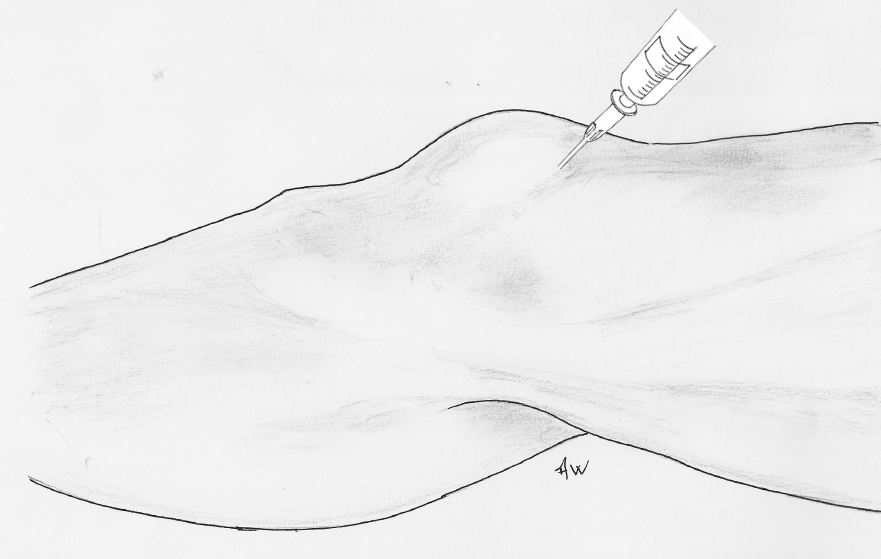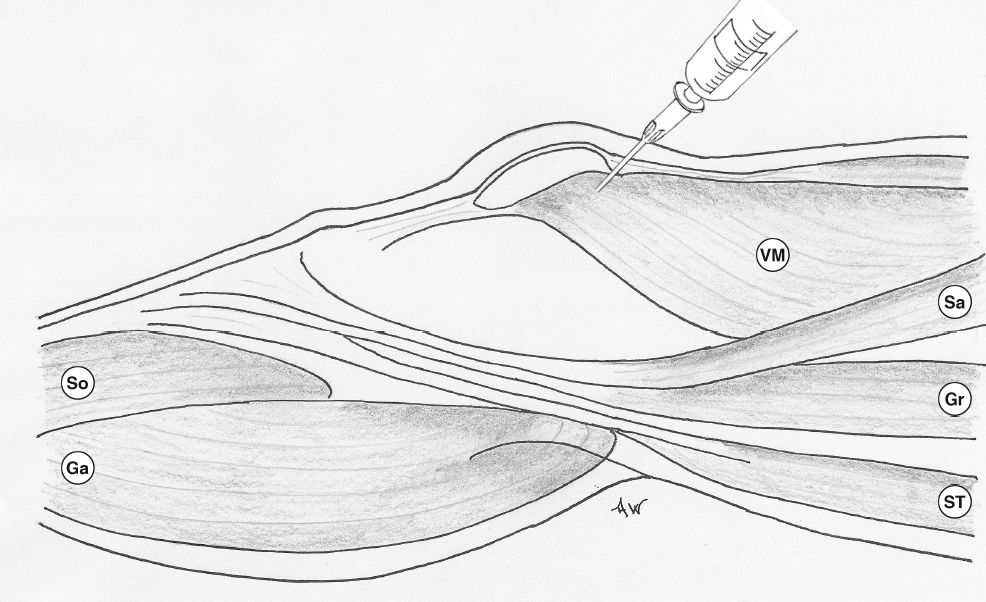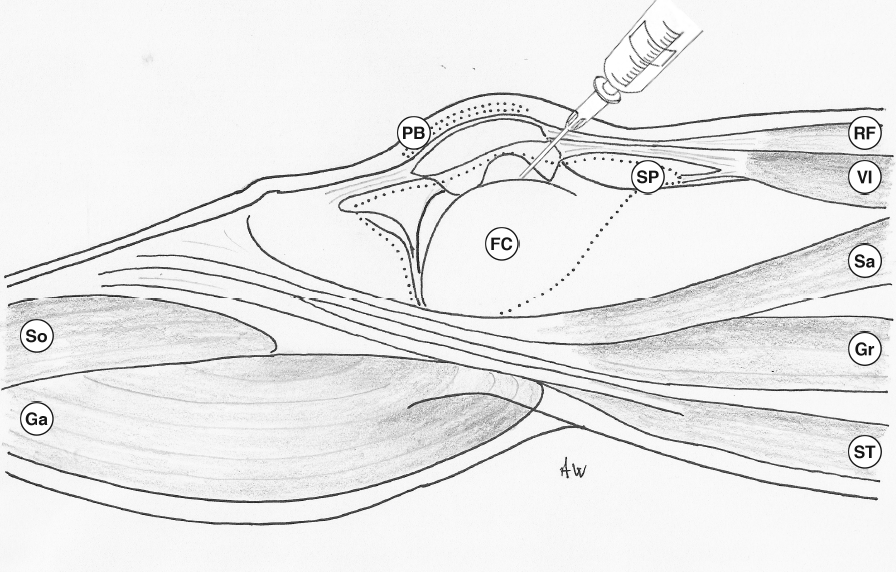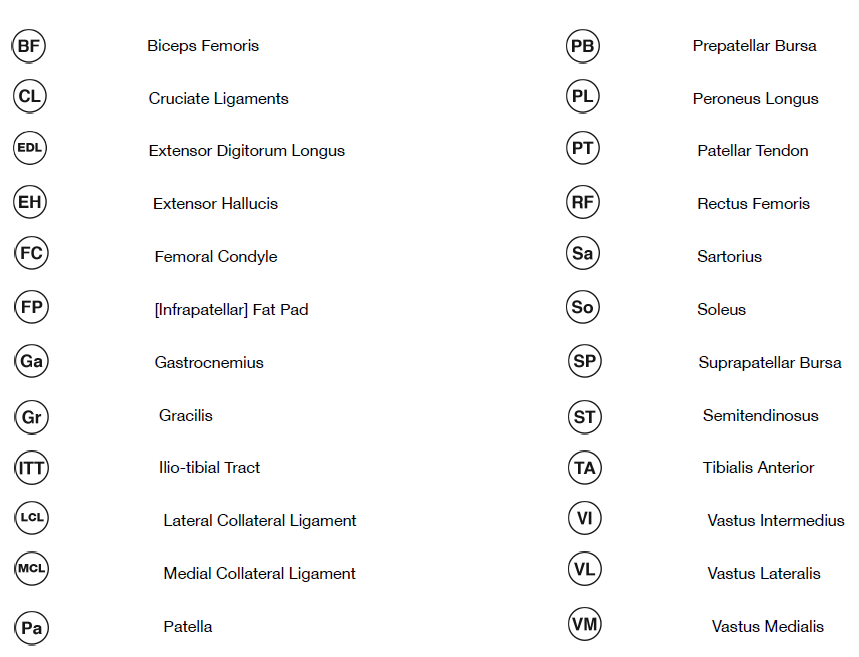Medial approach - aspiration or injection of the knee joint
Medial approach to injection of the knee joint
Based on contributions from Dr Elspeth Wise and Dr Alan Walker on behalf of the Primary Care Rheumatology and Musculoskeletal Medicine Society
- the patient should be resting on a couch with their knee extended
- the space between the patella and the femoro-tibial articulation should be palpated
- the needle is inserted at the mid point of the medial border of the patella and is directed laterally and slightly posteriorly
- it may be helpful to apply pressure to the lateral aspect of the patella whilst injecting so as to tilt the patella laterally and open up the medial space
Medial approach to injection of the knee joint - surface anatomy

Medial approach to injection of the knee joint - through vastus medialis (VM) labelled

Medial approach to injection of the knee joint - with vastus medialis removed for explanatory purposes to show injection point

Key to acronyms:

Reference:
Related pages
Create an account to add page annotations
Annotations allow you to add information to this page that would be handy to have on hand during a consultation. E.g. a website or number. This information will always show when you visit this page.